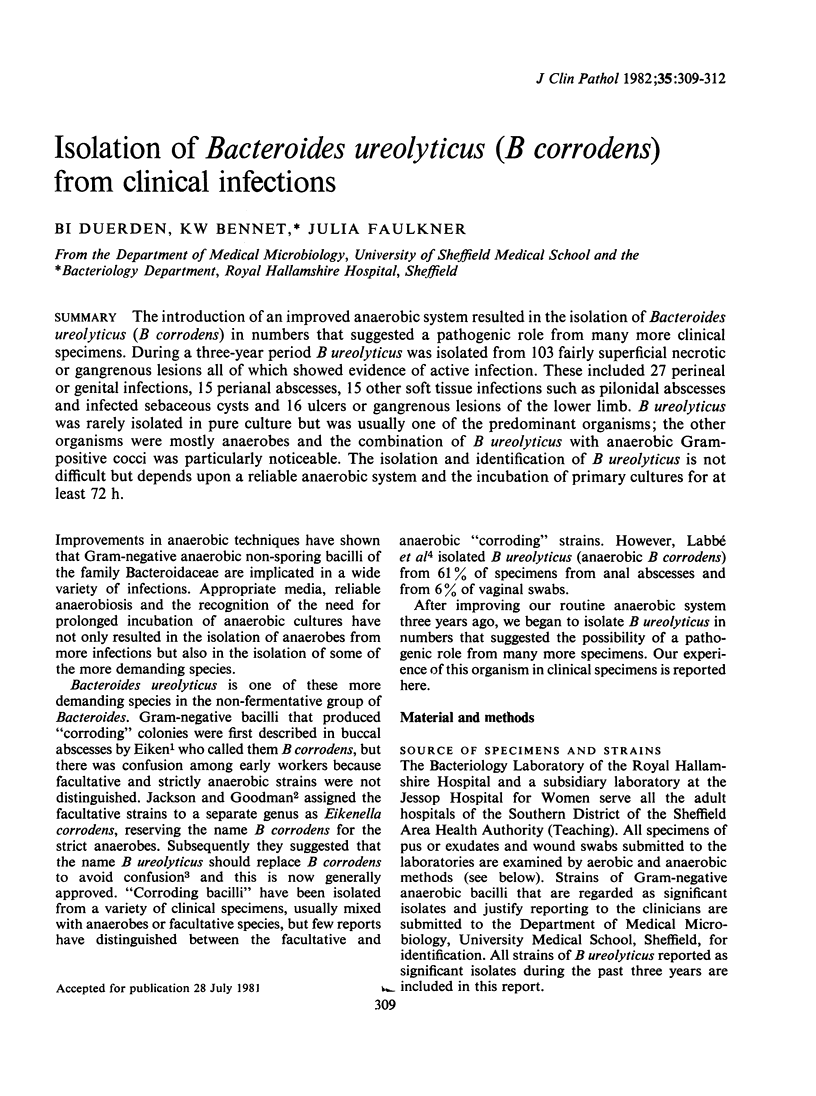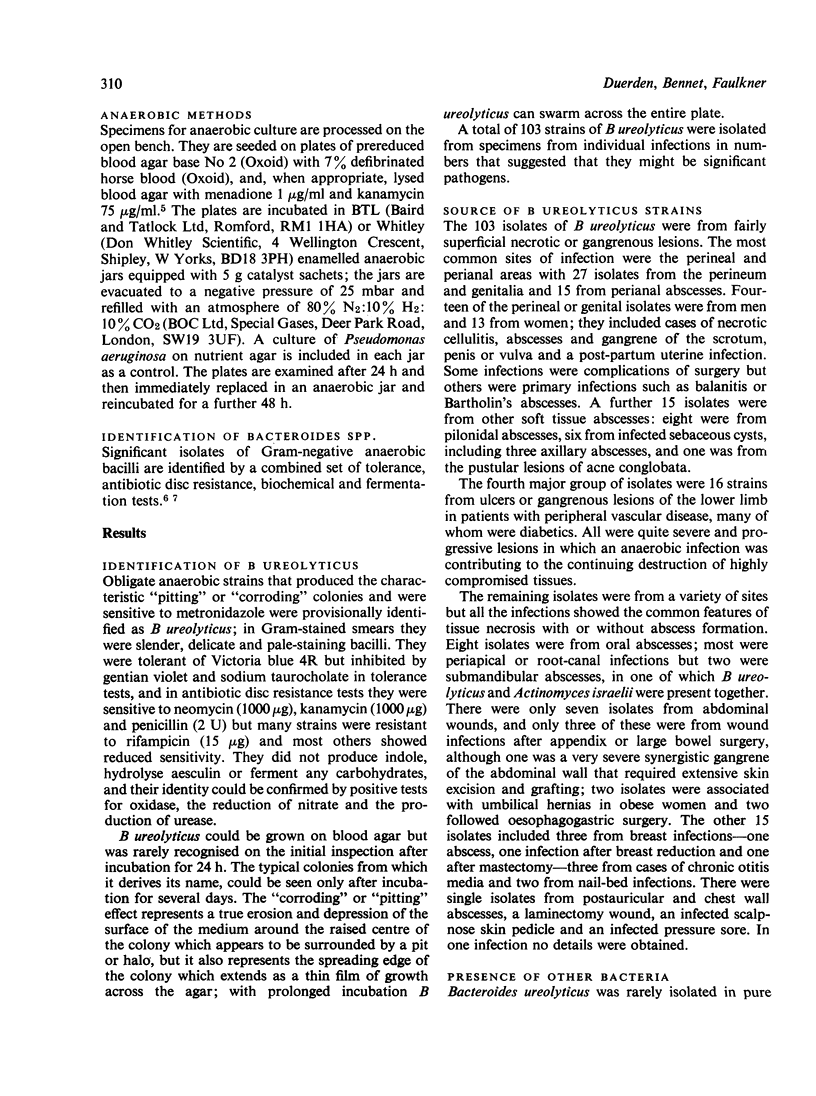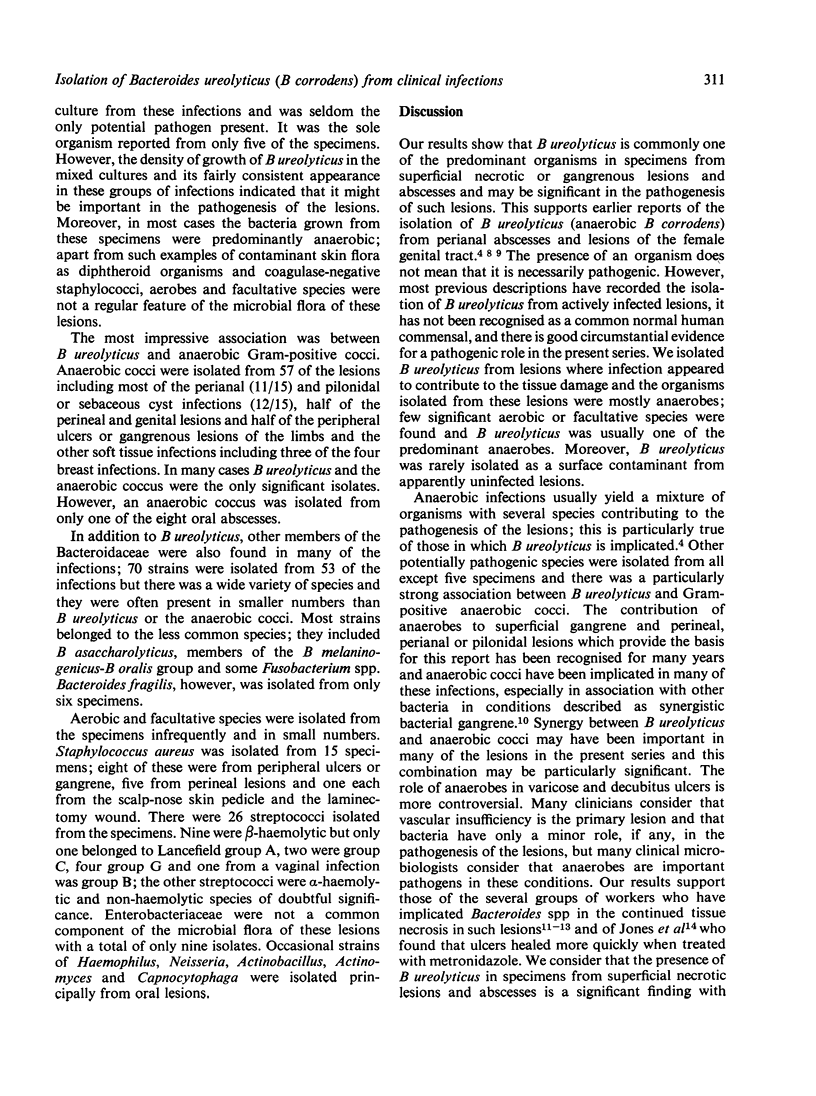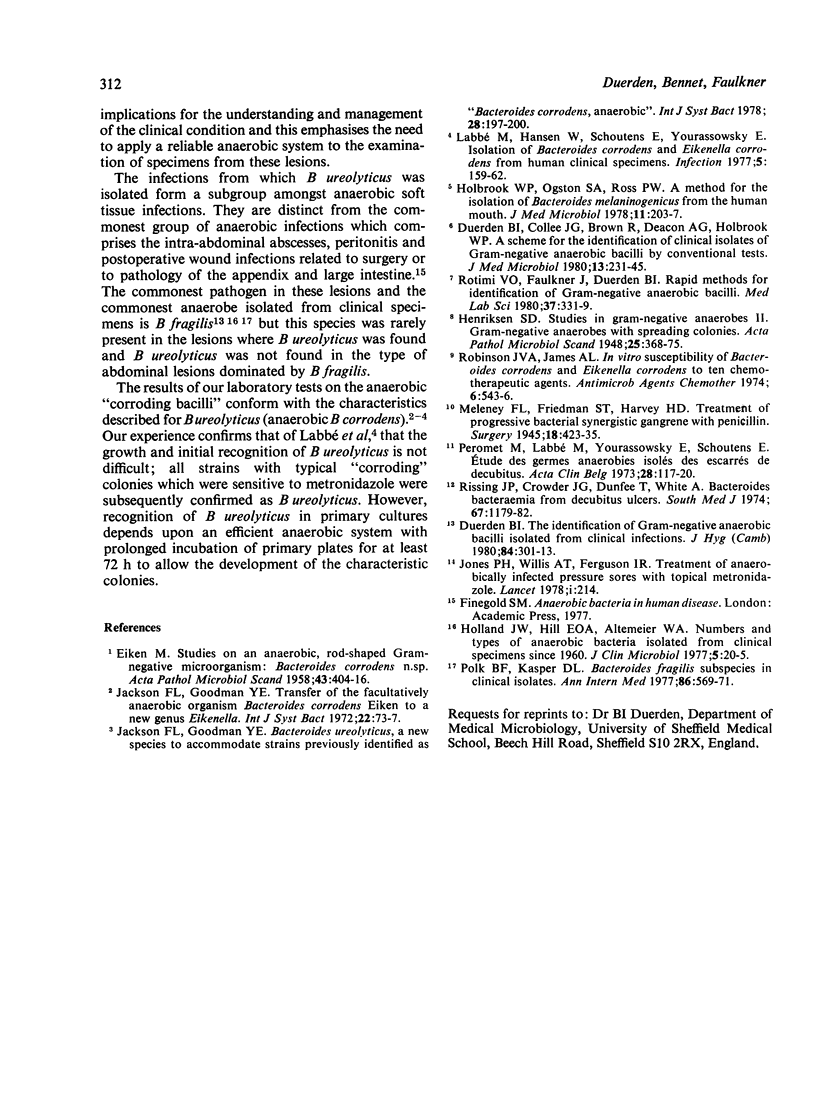Abstract
The introduction of an improved anaerobic system resulted in the isolation of Bacteroides ureolyticus (B corrodens) in numbers that suggested a pathogenic role from many more clinical specimens. During a three-year period B ureolyticus was isolated from 103 fairly superficial necrotic or gangrenous lesions all of which showed evidence of active infection. These included 27 perineal or genital infections, 15 perianal abscesses, 15 other soft tissue infections such as pilonidal abscesses and infected sebaceous cysts and 16 ulcers or gangrenous lesions of the lower limb. B ureolyticus was rarely isolated in pure culture but was usually one of the predominant organisms; the other organisms were mostly anaerobes and the combination of B ureolyticus with anaerobic Gram-positive cocci was particularly noticeable. The isolation and identification of B ureolyticus is not difficult but depends upon a reliable anaerobic system and the incubation of primary cultures for at least 72 h.
Full text
PDF



Selected References
These references are in PubMed. This may not be the complete list of references from this article.
- Duerden B. I., Collee J. G., Brown R., Deacon A. G., Holbrook W. P. A scheme for the identification of clinical isolates of Gram-negative anaerobic bacilli by conventional bacteriological tests. J Med Microbiol. 1980 May;13(2):231–245. doi: 10.1099/00222615-13-2-231. [DOI] [PubMed] [Google Scholar]
- Duerden B. I. The identification of gram-negative anaerobic bacilli isolated from clinical infections. J Hyg (Lond) 1980 Apr;84(2):301–313. doi: 10.1017/s0022172400026802. [DOI] [PMC free article] [PubMed] [Google Scholar]
- EIKEN M. Studies on an anaerobic, rodshaped, gram-negative microorganism: Bacteroides corrodens n. sp. Acta Pathol Microbiol Scand. 1958;43(4):404–416. [PubMed] [Google Scholar]
- Holbrook W. P., Ogston S. A., Ross P. W. A method for the isolation of Bacteroides melaninogenicus from the human mouth. J Med Microbiol. 1978 May;11(2):203–207. doi: 10.1099/00222615-11-2-203. [DOI] [PubMed] [Google Scholar]
- Holland J. W., Hill E. O., Altemeier W. A. Numbers and types of anaerobic bacteria isolated from clinical specimens since 1960. J Clin Microbiol. 1977 Jan;5(1):20–25. doi: 10.1128/jcm.5.1.20-25.1977. [DOI] [PMC free article] [PubMed] [Google Scholar]
- Jones P. H., Willis A. T., Ferguson I. R. Treatment of anaerobically infected pressure sores with topical metronidazole. Lancet. 1978 Jan 28;1(8057):213–214. [PubMed] [Google Scholar]
- Labbé M., Hansen W., Schoutens E., Yourassowsky E. Isolation of Bacteroides corrodens and Eikenella corrodens from human clinical specimens. Comparative study of incidence and methods of identification. Infection. 1977;5(3):159–162. doi: 10.1007/BF01639752. [DOI] [PubMed] [Google Scholar]
- Peromet M., Labbe M., Yourassowsky E., Schoutens E. Etude des germes anaérobies isolés des escarres de decubitus. Acta Clin Belg. 1973;28(2):117–121. doi: 10.1080/17843286.1973.11716862. [DOI] [PubMed] [Google Scholar]
- Polk B. F., Kasper D. L. Bacteroides fragilis subspecies in clinical isolates. Ann Intern Med. 1977 May;86(5):569–571. doi: 10.7326/0003-4819-86-5-569. [DOI] [PubMed] [Google Scholar]
- Rissing J. P., Crowder J. G., Dunfee T., White A. Bacteroides bacteremia from decubitus ulcers. South Med J. 1974 Oct;67(10):1179–1182. doi: 10.1097/00007611-197410000-00011. [DOI] [PubMed] [Google Scholar]
- Robinson J. V., James A. L. In vitro susceptibility of Bacteroides corrodens and Eikenella corrodens to ten chemotherapeutic agents. Antimicrob Agents Chemother. 1974 Nov;6(5):543–546. doi: 10.1128/aac.6.5.543. [DOI] [PMC free article] [PubMed] [Google Scholar]
- Rotimi V. O., Faulkner J., Duerden B. I. Rapid methods for identification of clinical isolates of Gram-negative anaerobic bacilli. Med Lab Sci. 1980 Oct;37(4):331–339. [PubMed] [Google Scholar]


